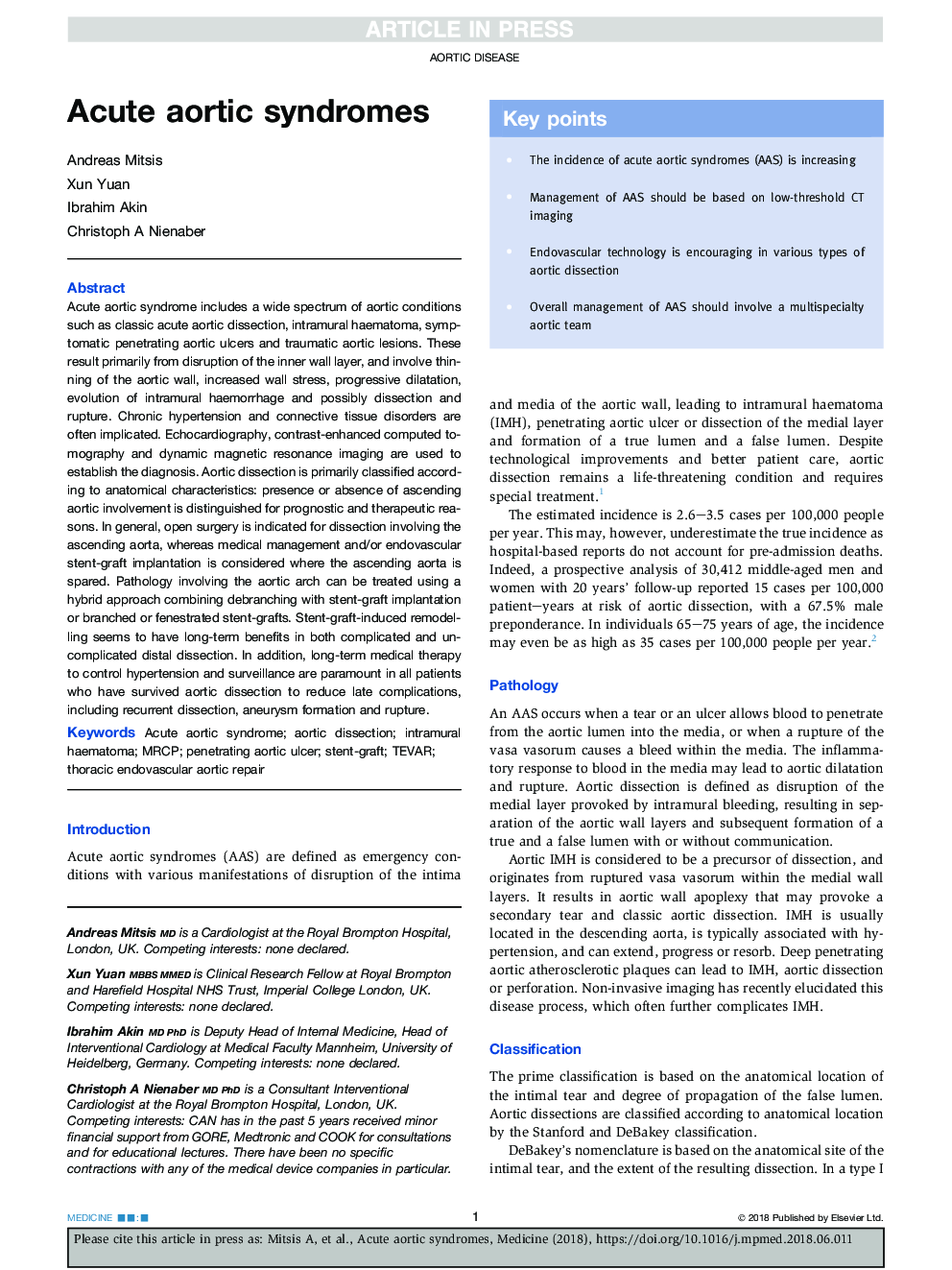| Article ID | Journal | Published Year | Pages | File Type |
|---|---|---|---|---|
| 8952304 | Medicine | 2018 | 6 Pages |
Abstract
Acute aortic syndrome includes a wide spectrum of aortic conditions such as classic acute aortic dissection, intramural haematoma, symptomatic penetrating aortic ulcers and traumatic aortic lesions. These result primarily from disruption of the inner wall layer, and involve thinning of the aortic wall, increased wall stress, progressive dilatation, evolution of intramural haemorrhage and possibly dissection and rupture. Chronic hypertension and connective tissue disorders are often implicated. Echocardiography, contrast-enhanced computed tomography and dynamic magnetic resonance imaging are used to establish the diagnosis. Aortic dissection is primarily classified according to anatomical characteristics: presence or absence of ascending aortic involvement is distinguished for prognostic and therapeutic reasons. In general, open surgery is indicated for dissection involving the ascending aorta, whereas medical management and/or endovascular stent-graft implantation is considered where the ascending aorta is spared. Pathology involving the aortic arch can be treated using a hybrid approach combining debranching with stent-graft implantation or branched or fenestrated stent-grafts. Stent-graft-induced remodelling seems to have long-term benefits in both complicated and uncomplicated distal dissection. In addition, long-term medical therapy to control hypertension and surveillance are paramount in all patients who have survived aortic dissection to reduce late complications, including recurrent dissection, aneurysm formation and rupture.
Keywords
Related Topics
Health Sciences
Medicine and Dentistry
Medicine and Dentistry (General)
Authors
Andreas Mitsis, Xun Yuan, Ibrahim Akin, Christoph A. Nienaber,
